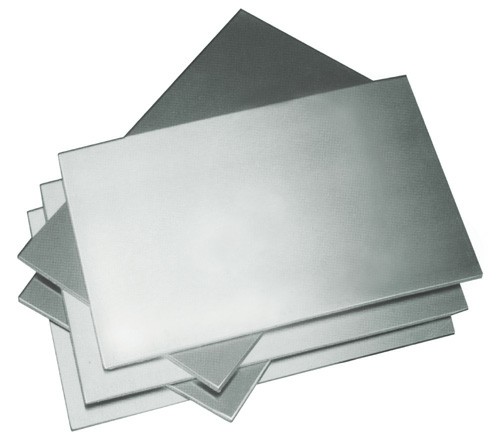PCB is a support body for electronic components and a carrier for the electrical connection of electronic components.Its development is mainly characterized by the proliferation of resins and reinforcing materials for pcb materials and insulating substrates during this period. The creator of the printed circuit board is the Austrian Paul Eisler (Paul Eisler), in 1936, he was first used in the radio printed circuit boards. 1943, the Americans used more than the technology used in military radios, and in 1948, the United States formally recognized this invention could be used for commercial purposes. It was only in the mid-1950s that printed circuit boards began to be widely used. Before the advent of PCBs, the interconnection of electronic components was accomplished by direct connection of wires. Today, circuit boards are only used in laboratories for experimental applications and exist; printed circuit boards have taken absolute control in the electronics industry. Almost every kind of electronic equipment, from small electronic watches, calculators, computers, communication electronics, and military weapons systems, as long as there are integrated circuits and other electronic components, to electrically interconnect them, all have to use printed circuit boards.
When choosing PCB materials, you need to select the most appropriate PCB materials according to the specific application needs and environmental requirements, to ensure that the performance and reliability of the circuit board meet the desired goals.PCB materials mainly include copper cladding boards, copper foils, semi-cured sheets, epoxy resins, fiberglass fabrics, polyimide, polytetrafluoroethylene, BT/EPOXY resins, and so on.
Selection of PCB materials to consider:
1. Application environment: Consider the performance of the material in a specific environment (e.g., high temperature, high humidity, chemical corrosion, etc.).
2. Reliability: Evaluate the reliability and stability of the material in long-term use.
3. Electrical Performance Requirements: Consider the material's dielectric constant, dielectric loss, and insulation properties.
4. Mechanical properties: Select materials with appropriate strength and toughness according to the application scenario.
5. Thermal management requirements: Evaluate the thermal conductivity and heat resistance of the material to ensure effective heat dissipation.
6. Cost: Comprehensively consider material cost and manufacturing cost to balance performance and economy.

Copper-clad laminate is the basic material for making PCB, which is made of reinforcing medium (e.g., glass fiber cloth) impregnated with resin binder and then dried, cut, and laminated into a blank, then covered with copper foil, and molded by steel plate, and formed by high temperature and high pressure hot pressing.
(1) Copper foil is the main material that makes up the conductive layer of the PCB and is usually between 12 and 70 microns thick.
(2) Semi-cured sheet is the semi-finished product of the copper-clad board in the PCB manufacturing process, which is mainly made of glass cloth soaked with resin and then dried.
(3) Epoxy resin is a heat-curing material that produces a polymer polymerization reaction with excellent electrical insulation properties and is used as an adhesive between the copper foil and the reinforcement (e.g., fiberglass cloth).
(4) Fiberglass cloth is an inorganic material with high strength and stability BT/EPOXY resin is a heat-resistant material made by reactive polymerization of Bismaleimide and Trigzine Resin monomer, which is usually mixed with epoxy resin to make a substrate for high-frequency and high-speed transmission circuit boards.
Commonly used material types are listed below:
FR4 (Glass Fiber Epoxy Resin), FR4 is the most common PCB material, widely used in various electronic devices.
Good electrical properties: FR4 has good insulation and electrical properties, its dielectric constant (Dk) and dielectric loss (Df) are low, and suitable for high-frequency applications.
High mechanical strength: It has good strength and stability, better heat resistance, and can withstand mechanical stress.
Heat resistance and flame retardancy: able to maintain stability at high temperatures and comply with UL94 V-0 flame retardancy standards. Cost-effectiveness: lower cost, suitable for mass production.
Scenarios for FR4: consumer electronics, communication equipment, household appliances, general industrial applications, general multilayer board design.
Metal substrates (e.g. aluminum substrates, copper substrates)
High thermal conductivity: Metal substrates (especially aluminum substrates) have excellent thermal performance and are suitable for applications with high thermal management requirements.
High mechanical strength: metal substrates have good mechanical strength and rigidity to provide stable support.
Good electrical performance: suitable for high-power and high-density applications.
Higher cost: Compared with FR4, the cost of metal substrate is higher.
Applicable scenarios for metal substrates: power modules, automotive electronics, industrial electrical equipment, communication base stations and radar systems, antennas, and filters.
Ceramic Substrates
High thermal conductivity: Ceramic materials have excellent thermal conductivity and can dissipate heat quickly, making them suitable for high-power density applications.
High-Temperature Stability: The coefficient of thermal expansion is close to that of silicon, which provides excellent high-temperature resistance and is suitable for high-temperature environments.
Excellent electrical properties: good insulation properties and low dielectric constant, suitable for high voltage applications.
Mechanical strength: higher hardness and strength, but more brittle.
Scenarios for ceramic substrates: high-power LED lighting, RF and microwave communications, aerospace and military electronics, high frequency, and high-speed circuits.
Polyimide (PI)
Flexibility and bendability: PI substrates are flexible materials and are suitable for flexible circuit boards (FPC) and rigid-flexible boards.
High-temperature resistance: Polyimide materials can remain stable at high temperatures, making them suitable for extreme environmental applications.
Good electrical properties: Excellent electrical properties,suitable for high-frequency applications.
Lightweight: Lightweight, suitable for miniaturization and lightweight design.
Applicable scenarios for polyimide: flexible displays, wearable devices, medical electronics, and high-density interconnect (HDI) circuit boards.